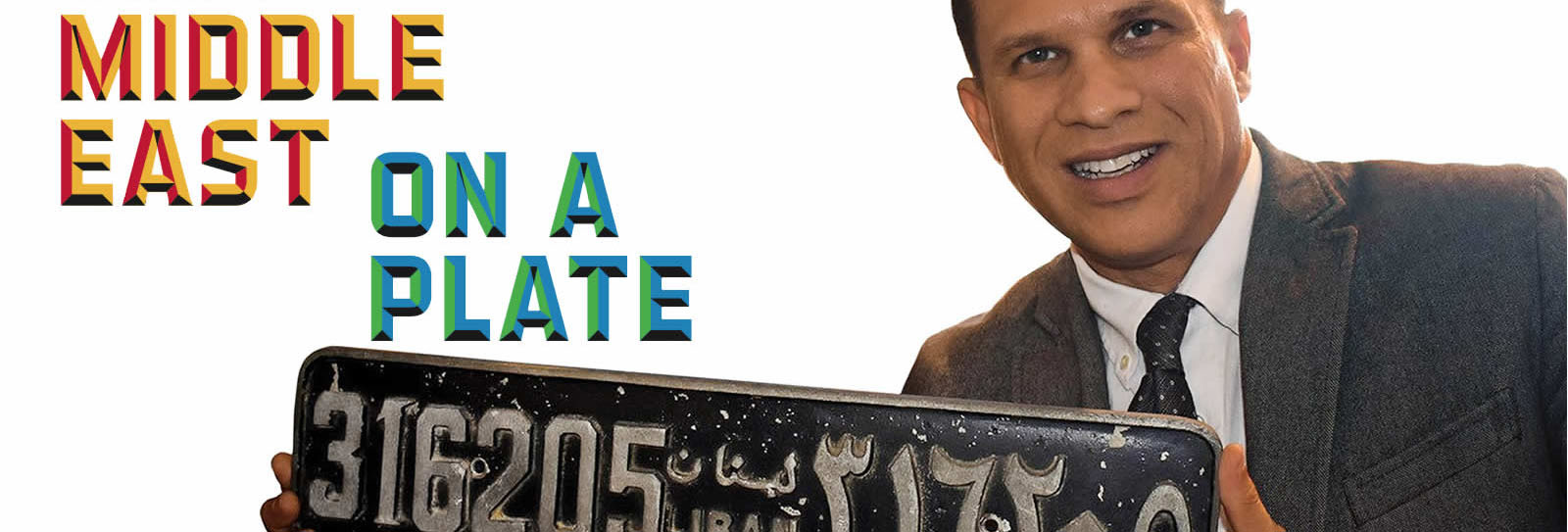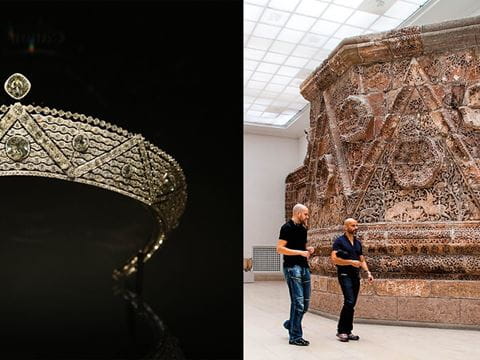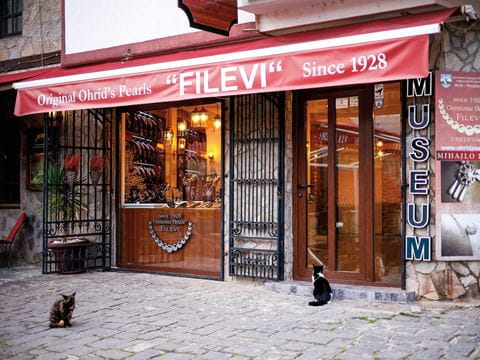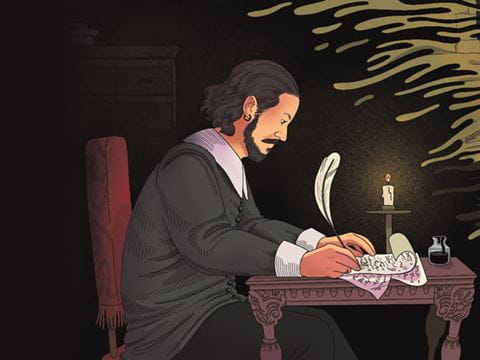
The Middle East on a Plate
His roadside discovery of a discarded Lebanese license plate kindled the author’s 30-year passion for license plates from the Middle East and North Africa. Along the way, he often found pleasant and humorous stories, as well as bright artifacts of the diversity of daily life.

One sunny spring afternoon in 1983, I was driving a rental car near Syria’s border, admiring a spectacular view. I stopped and stepped out to take a photograph. That’s when I saw it: Lebanese license plate 316205. It was lying alone, discarded in the tall grass, its silver Arabic script and numbers handsome on its black background. This discovery stirred a fascination in me that became a 37-year hobby of license plate collecting. This first find remains on prominent display among what are now 463 others in my collection, 50 of which are from countries of the Middle East and North Africa. These include every country in the 22-member Arab League except Comoros. I’ve even been fortunate enough to acquire plates from five of the seven Trucial States that since 1971 comprise the United Arab Emirates—only Ajman and Fujairah are still missing.
Like most collectors today, I obtain most of my tin (sometimes plastic, sometimes aluminum) rectangles from eBay or organized plate-collector meetups. But as a journalist who travels frequently, there’s nothing more satisfying than going somewhere and coming home with an unexpected, unusual plate—and a story.
For example, one came to me in 1992 when an Egyptian taxi driver taking me to Cairo International Airport was thrilled to sell me the spare license plate lying in his trunk that I noticed while loading my luggage. In 2001, while in Bethlehem, I visited a metal shop in the process of minting new plates, and the proprietor happily sold me 10 expired ones that were useless to him. Years later, I happened upon several rare local plates while perusing a junkyard in Djibouti City, capital of Djibouti. In 2007 an assignment took me to Aleppo, where hidden among the treasures in the market of the city’s historic citadel, I found a lone Syrian license plate from the early 1960s: Its owner wanted $500; we settled on $200.
I’m not the only collector who appreciates the variety of colors, designs and alphabets on plates from the Middle East. Ross Day, archivist of the Automobile License Plate Collectors Association (alpca), says most of its members focus on North American license plates, and it’s a handful of dedicated others who collect from around the world, many from Muslim-majority countries.
“Their motivations are no different from their colleagues: an interest in license plate design and manufacture, a facility with non-Roman scripts or an attraction to a plate’s historical and geopolitical context,” he says, explaining that collectors often have personal or professional interests in regions from where they collect.

In the United States (us), Canada and Mexico, plates come in a standardized 15-by-30-centimeter size, mass-produced in factories and, frequently, in prisons. Throughout the Middle East, however, plates vary much in shapes and sizes, and there is a history of craftsmanship. In some cases—particularly before the 1970s, metal was at times hammered out by hand, with skilled individuals raising letters, adding colors and shaping edges. For example, early plates from Saudi Arabia, Lebanon and Syria are highly sought-after for their distinctively raised lettering and unusual cast-aluminum construction. The most common color combination on Middle Eastern plates is silver-on-black, though yellow, blue, green, red and orange are frequently used.
One especially avid collector, Jim Fox, says he enjoys plates from the Middle East and North Africa simply because the curves in Arabic script make them more visually appealing than the block letters of English and other Roman-based alphabets.
“They’ve become somewhat of a mystery to the average collector. I like them because they look so different than what we’re used to seeing,” he says.
Fox, 73, toured the globe for years as a drummer in the American rock-’n’-roll band James Gang. This afforded him the opportunity to amass a trove of international plates, taking to unimagined heights a hobby he began when he was seven years old. He says he once owned more than 30,000 plates but in the 1990s began downsizing. Now he owns 1,000, and about 60 are from the Middle East.
He recalls that one of his most memorable acquisitions came in 1971 in London. He and James Gang bassist Dale Peters schmoozed their way into a posh hotel to try to meet the driver of a valeted Lamborghini in which they had spotted, in the back seat, a silver-and-red license plate reading “Abu Dhabi 4.” After some dialog with hotel reception, Fox was informed this would be impossible, that the car belonged to a guest who wanted his privacy. A nearby bellhop overheard the conversation, however, and for a tip offered to call the driver’s room.
“Sure enough, he dialed the number and handed me the phone,” Fox says, who explained to the man who picked up the phone he was an American musician in want of the back-seat license plate. Then the driver got on the phone.
“You want that thing? I’ll be right down,” Fox says, telling the story.
They waited in the lobby for a few minutes, the elevator doors opened and out walked “a shaykh” with a small entourage.
“He looked around, saw me and smiled. We shook hands. He said, ‘Come with me,’ unlocked the door of his Lamborghini and gave me the plate. Later on, I sent him some record albums,” Fox says. “I never heard from him again.”
The first country to issue license plates for automobiles was France, in 1893. The first us plates were issued in 1901. In the Middle East and North Africa, Egypt led the way: The October 1914 issue of Ford Times magazine shows a photo of a Ford Model T parked in front of the Pyramids in Giza with a red, white and black tag on it that was made of porcelain. Turkey began issuing license plates in 1920; Morocco began in 1923. During the 1950s and 1960s, the Arabian-American Oil Company (Aramco) cast its own aluminum plates for use inside the towns and oilfields of Saudi Arabia within the company’s concession area. The changes in plate sizes, shapes and materials have made collecting license plates another window into the diversity of the region.
Dick Parker of Greenwich, Connecticut, has collected license plates most of his life. After his kids grew up and moved away 20 years ago, the hobby intensified, he says.
“My wife and I are avid travelers, so I got hooked on international plates, especially those with unusual designs and colors, and the most unique designs were from the Middle East and Latin America,” Parker says.
He’s accumulated nearly 5,500 tags, including 381 from the Middle East and other Muslim-majority countries with non-Roman scripts, such as Urdu and Farsi.

Among his prize plates, he says, “Saudi plates from the 1950s and 1960s were almost all cast, and these cast plates always command a premium because of their uniqueness.” In recent years, he notes, some buyers of such plates have been locals seeking something exotic yet with a heritage. “They can’t find any of the older stuff locally, so they’ve been bidding extremely high amounts for these older plates at various auction venues, both online and in person here in the States.”
One even set a world record for the most expensive license plate: Emirati executive Saeed Abdul Ghafour Khouri in 2008 paid the equivalent of us $14.3 million for “Abu Dhabi 1.”

Another well-known collector of Middle Eastern license plates is Vincent Moens of Paris, who began collecting in 1980 at age 15 and has since acquired 10,000 plates, including about 1,000 from the Middle East and North Africa. Travel and an overseas move in 1979 allowed him to gather plates from around the globe during the 1980s and 1990s.
“During those years, plates were easy to get—and quite cheap too. The Internet changed it all,” he says.
Today, Moens runs a Facebook group called “License Plates from Former Countries and Colonies,” with 143 members. Other Facebook groups, such as “License Plates of the Arabic/Arab World,” with 202 members, and “License Plate Collectors,” with 9,500 members, continue to attract enthusiasts. And for Day, who continues his work as an archivist with alpca, the interest in international license plates draws the curious and the avid every day, and Middle Eastern plates remain among the most sought after.
“Worldwide, the notion of preserving—let alone collecting—license plates is, well, foreign. And there is always the possibility of restrictions on the possession or export of license plates, which may be considered government property,” Day says. “While I have only a few Arabic plates in my own collection, they hold a very special place.”
As they do for my collection—starting with 316205, which, if I had been in a bit more of a hurry that day, might still be weathering in the tall grass by the road.
You may also be interested in...

Cartier and Islamic Design’s Enduring Influence
Arts
For generations Cartier looked to the patterns, colors and shapes of the Islamic world to create striking jewelry.
Family Secret: The Mystery of North Macedonia’s Ohrid Pearls
Arts
Artisans are preserving the elusive technique behind these pearls—handmade from a fish, not an oyster—in a town of Slavic, Byzantine and Ottomon influences.
Stratford to Jordan: Shakespeare’s Echoes of the Arab World
Arts
History
Shakespeare’s works are woven into the cultural fabric of the Arab world, but so, too, were his plays shaped in part by Islamic storytelling traditions and political realities of his day.